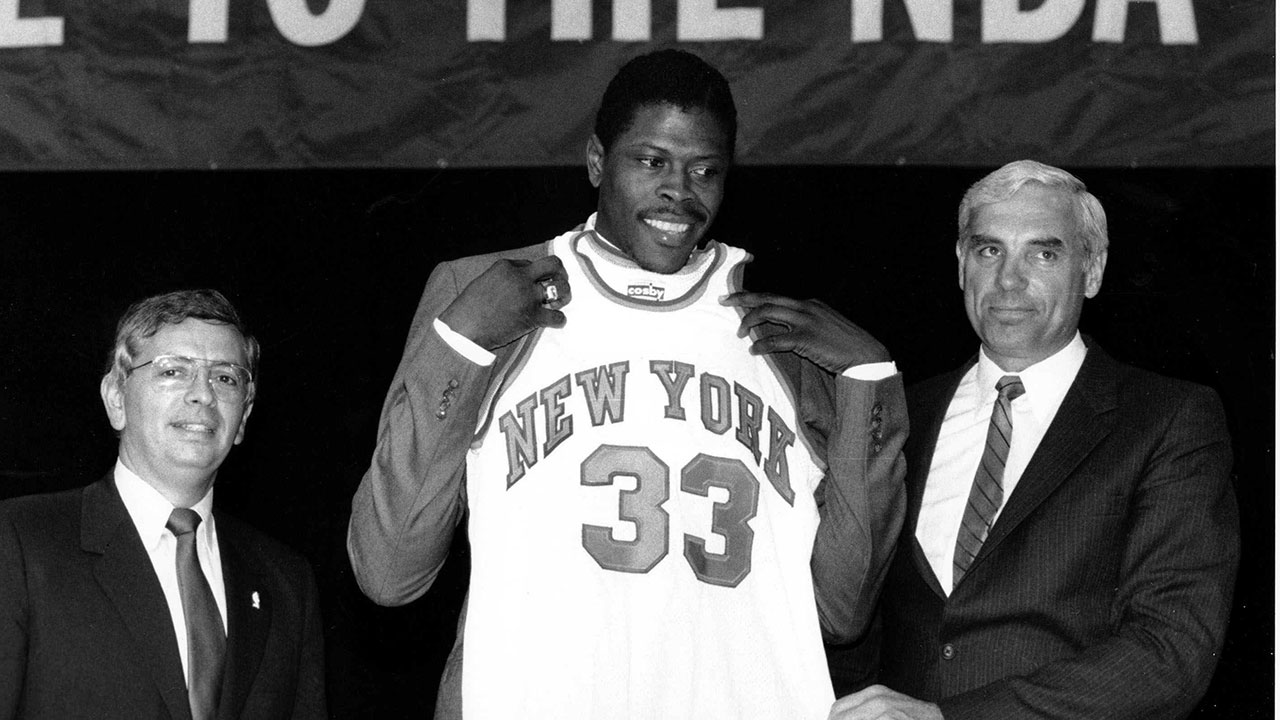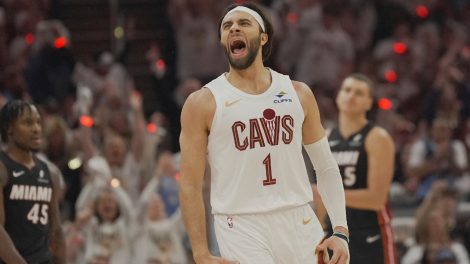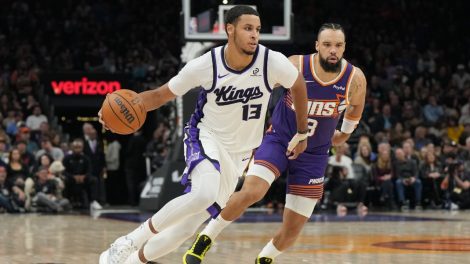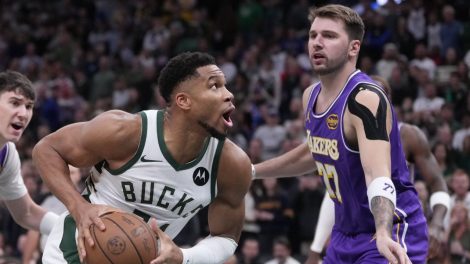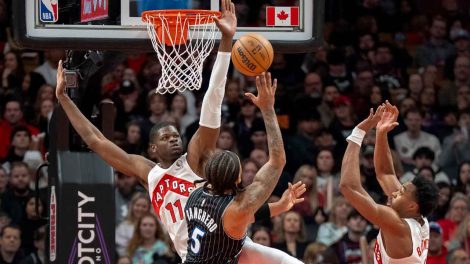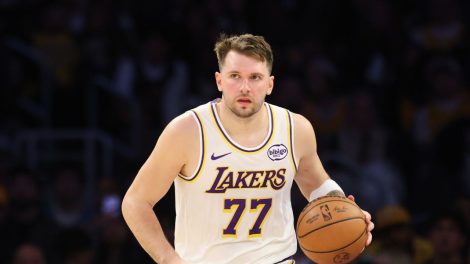On Tuesday, the fate of Duke star freshman forward Zion Williamson will be decided when the NBA’s Draft Lottery takes place in Chicago.
Hailed as a generational talent, Williamson could be just the ticket to revive championship aspirations for any of the 14 teams who failed to reach the playoffs this season, and therefore have balls in play Tuesday.
One such team is the New York Knicks, whom you may have heard, are sending a good luck charm in the form of former franchise centre Patrick Ewing as their team representative.
Ewing was selected by the Knicks with the No. 1 pick in the 1985 NBA Draft, the first time a lottery was used to award the top pick. The fact that a generational talent such as Ewing landed in the league’s biggest market with a franchise in desperate need of a shot in the arm, as a result of the commissioner pulling an envelope out of a drum was, and remains to this day, a tad controversial.
But was it really a conspiracy?
What are the elements and assumptions that make up the Patrick Ewing draft lottery conspiracy? And why does it remain such fertile ground for NBA conspiracy theorists, almost 35 years later?
The answers are equal parts awesome and ridiculous…
[relatedlinks]
What is the conspiracy?
Simply put, that then NBA commissioner David Stern conspired to rig the draft lottery to ensure the New York Knicks land the No. 1 pick and Ewing.
It’s worth noting that 1985 Patrick Ewing was every bit the college prospect that Zion Williamson is today. During his time at Georgetown, Ewing was a three-time consensus first-team All-American, two-time Big East Player of Year, a national champion in 1984 and the 1985 national college player of the year. He was everything an NBA team in the ’80s wanted in a franchise player: a seven-footer who could post, rebound, score and change games with his defence.
In other words, Ewing and New York seemed like a match made in NBA marketing heaven.
David Stern was a man on a mission
In the early 1980s, it was reported that the NBA had a serious drug problem, with estimates of anywhere between 40 and 75 per cent of players in the league using cocaine.
Stern, who had succeeded Larry O’Brien as commissioner of the NBA in 1984 was on a mission to get drugs out of the NBA, and NBA headlines.
One of the ways he attempted to do so was by introducing the draft lottery, a tool to not only prevent teams from tanking, but to create some buzz among fans and media. Maybe even advertising executives.
“There is a strong feeling among league officials and television advertising executives that the NBA will benefit most if he winds up in a Knick uniform,” wrote Sam Goldaper in a May 6, 1985 edition of The New York Times.
Stern, the Knicks and the NBA as a whole would benefit greatly with a Knicks lottery win.
But how could they have rigged it?
This is where things get really fun, and silly.
Below: Take a quick look at this video to see how the 1985 draft lottery was executed:
Anything suspicious catch your eye? Nope? Well, a quick YouTube search of “1985 NBA Draft Lottery” will send you down quite the rabbit hole of ways in which some believe the NBA pulled it off.
Here’s a quick rundown of some of the most common theories:
The bent envelope
As you could see in the video, the 1985 draft lottery was conducted using envelopes for each team that were then placed into a large plastic ball and spun before Stern pulled out the winner.
Conspiracy theorists will tell you that the envelope for the Knicks had a bent corner, possibly to identify it to Stern when pulling out the winner.

If that’s not enough for you to don your tin hat, consider that the gentleman who placed the envelopes into the plastic drum, Jack Wagner, was from the accounting firm, Ernst & Whinney.
Some see this as significant to note because Ernst & Whinney was the auditing firm for Gulf and Western, the then-ownership group of the Knicks.
Even more suspicious, is the fact that Wagner appeared to bang the fourth envelope — the one with the Knicks logo on it — against the side of the drum’s opening even though he was very purposefully putting his hand into the barrel and more deliberately dropping envelopes in for the other envelopes.
This GIF below shows the banged-against envelope (second one tossed):
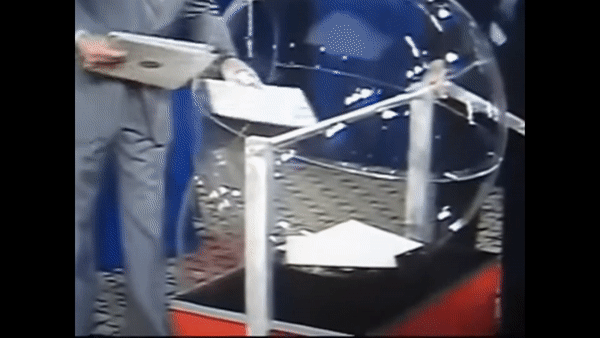
Was Wagner trying to bend the corner of the envelope for Stern?
The frozen envelope
The most infamous 1985 draft lottery conspiracy theory of them all is the most fun, and perhaps not coincidentally features the least “evidence.”
As the story goes, the envelope that had the Knicks logo on it was secretly kept in a freezer right up until the moment all the envelopes were brought on stage, thereby allowing Stern to easily identify it among the pile in the drum.
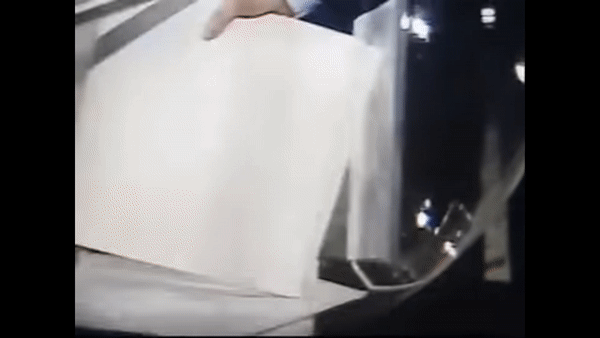
A deep exhale = guilt
Just as Stern begins unlocking the plastic drum to open the door he lets out a huge exhale before sticking his hand in.
If this doesn’t scream guilt, what does? ;)
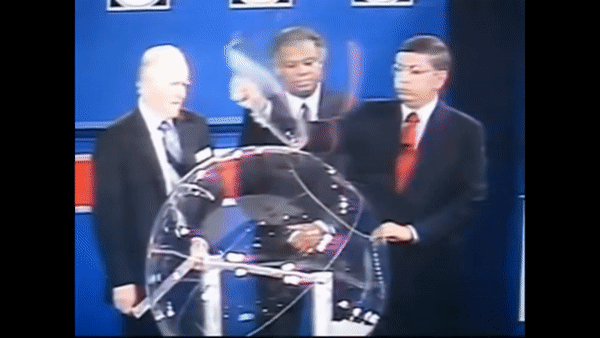
Smug satisfaction with the result
Following the Knicks win, there was an air of self-satisfaction from many of the parties involved, summed up perfectly by CBS Sports’ Pat O’Brien, who was reporting on the event, famously proclaiming on national television that “basketball is back in New York City, my friends.”
Additionally, then-Knicks general manager Dave DeBusschere had a Knicks Ewing jersey at the ready to pose with for photos.
Lastly, the coup de grace was Stern’s comments he made to reporters after the event.
“We were very pleased with the lottery,” Stern said, “The interest was great. People are talking about the lottery instead of drugs.”
In other words, mission accomplished.
So, did the NBA actually fix the 1985 draft lottery?
No one can say for sure and despite all of this remarkable “evidence” that has been presented above, it’s still very hard to believe a professional sports league already suffering from credibility issues would go to such lengths and risks to rig its first-ever lottery.
That won’t stop people from talking about it, as Jim Rome did with Stern in 2012.
“Was the fix in for the lottery,” Rome asked, to which Stern responded, “I have two answers for that. I’ll give you the easy one: No. And a statement: Shame on you for asking.”
With that said, let’s not take anything away from how ridiculous and fun a sports conspiracy theory this one is. And with Ewing in the house tonight, and the Knicks again in dire need of the consensus No. 1 franchise star up for grabs, who knows what we’ll be talking about tomorrow?
